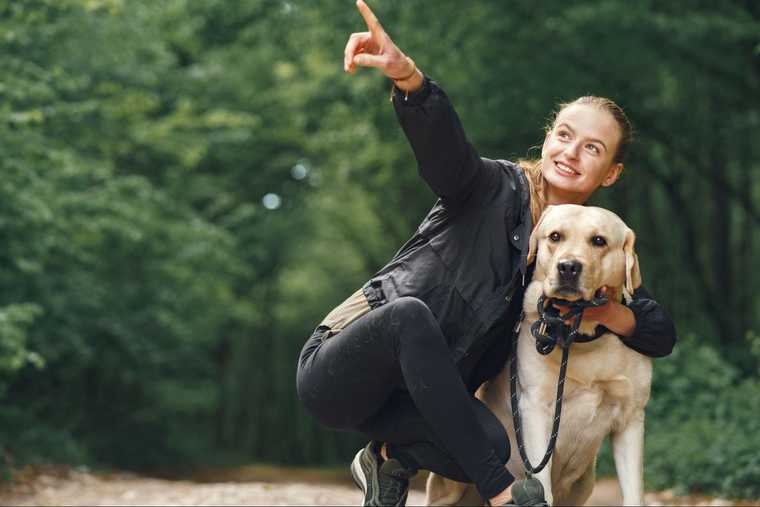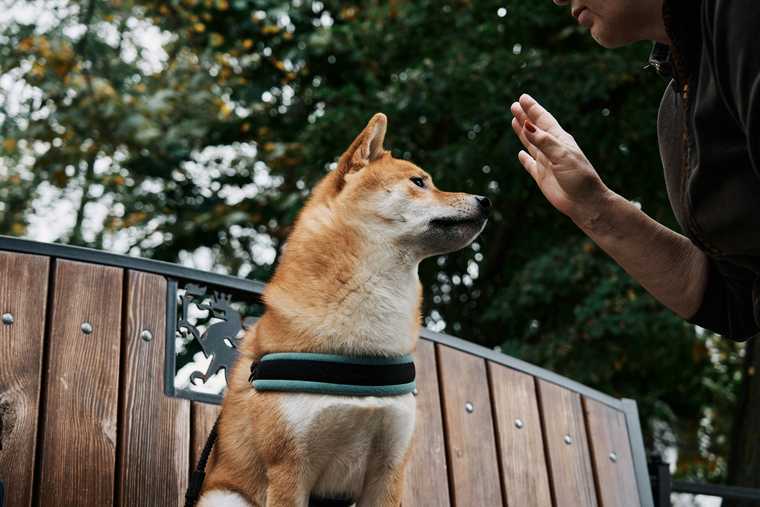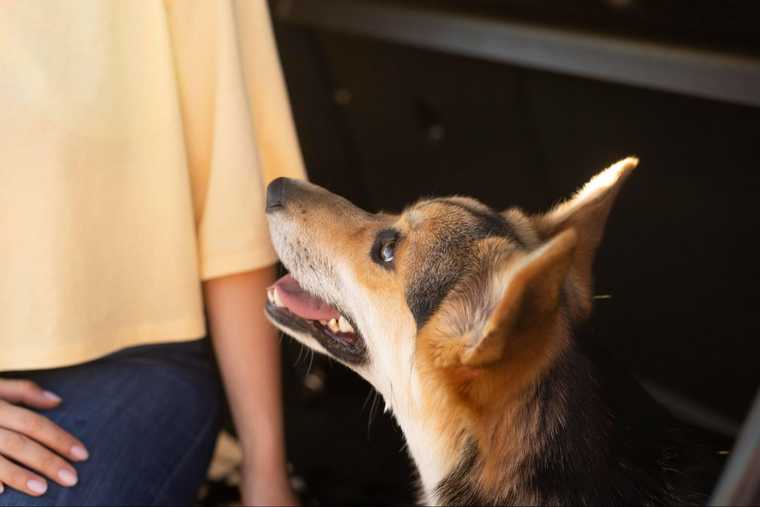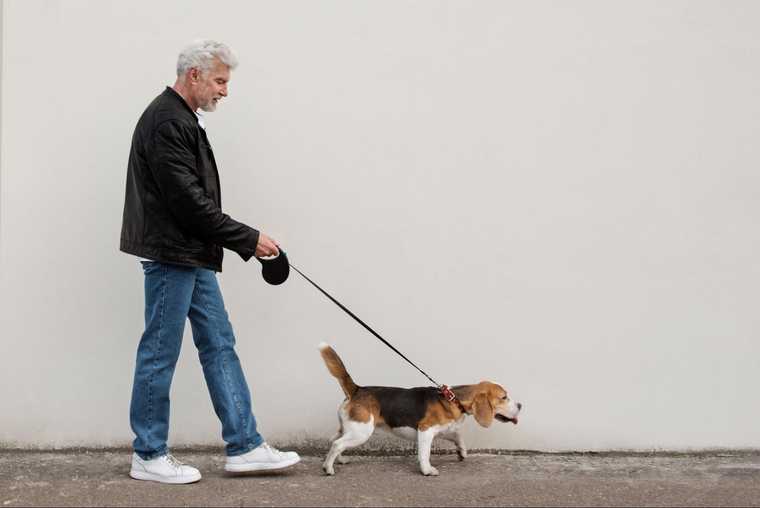Training a Deaf Dog: 4 Steps to Reach Your Training Goals

Have you ever wondered how to train a deaf dog? Though it comes with unique challenges, teaching deaf dogs obedience relies on the same principles as regular dog training. Rewards and positive reinforcements are fundamental for encouraging desired behaviors. Still, owners must have specific knowledge to help a pet with hearing issues understand cues and learn new commands.
Whether you have a puppy born deaf or your companion has lost their hearing due to aging, this guide will help you start training your deaf dog. Let’s dive into it.
How Do I Begin Teaching and Training My Deaf Dog?
One key element in positive reinforcement training is marking and rewarding desired behavior, which helps canine students learn that specific actions can bring treats and benefits. Most owners use verbal markers such as “Yes!” or “Good job!” to show their pets their approval. However, this is something you can’t use with a hearing-impaired canine.
What should you do instead? Start by choosing an appropriate visual marker to pair with a reinforcer. You can use a touch (like a tap), a hand, or a light signal.

4 Expert Tips for Deaf Dog Training
In a nutshell, while training a hearing-impaired canine, you must work on teaching them to focus on you, choose a working visual marker, learn how to use rewards, and help them with their startle response. Now, let’s analyze each step in more detail.
Tip #1: Deaf dog obedience training signals
Teaching your pet visual signals to mark the desired behavior is essential. Since a hearing-impaired dog can’t distinguish the sounds, using a marking word won’t work. Luckily, you have plenty of other options to choose from. We’ve collected some of the ideas.

Popular reward markers are:
-
Hand signals: Use a specific gesture to make a desired behavior. Ensure it’s easily distinguishable, like a thumbs-up sign or a hand “flash” (you open the closed fist, show the open palm, and return to the closed fist).
-
Light: Use a light marker, like a keychain with a light, and train your furry friend to recognize it as the marker. Avoid using a laser pointer, as it can be damaging to your pet’s eyes.
Note: Canines are good at reading human body language, so you can try using exaggerated facial expressions to convey your message more efficiently.
Once you choose the appropriate marker, train your dog to see it as such. To do so, establish eye contact with your canine companion. Use a marker (a thumbs-up or a light) and follow it with a treat. Repeat the procedure 10-12 times before you move to the next step.
Tip #2: All eyes on the owner
Teaching a dog to react to your visual cues and markers is impossible unless they know how to focus on you. We suggest introducing your pet to the “Watch me” command first. Choose a signal, like a gentle tap and pair it with the reward. You can also use signals like gently tugging a leash or buzzing a vibrating collar.

Use a treat to lure your dog into eye contact. Use a marker (e.g. a thumbs-up) and then reward them with a treat. With time, your canine student will only start looking at you upon your signal.
Additionally, you can start rewarding your pooch whenever they look at you. This will help them learn that maintaining eye contact brings benefits, so they will start offering you their undivided attention voluntarily.
Tip #3. Start startle training
Due to hearing loss, deaf dogs must use their other senses to understand the world around them. Thus, they can feel the floor's vibrations when you approach them. Still, your arrival can catch them off guard, and they might get startled. This is particularly true for dogs that lost their hearing later in life.

In such cases, you must desensitize your canine and teach them that startling can lead to rewards. To do so, touch your dog in the same spot and follow the touch with a reward. First, do it when the dog is awake, and later practice waking up your dog with your touch and consecutive reward.
Tip #4. Be considerate of your dog’s special needs
How a deaf dog processes information about its environment, other pets, and people differs from that of a dog without hearing issues. Be considerate of these peculiarities. Stay in the line of their vision, not to startle them by suddenly appearing in the room. Inform your visitors about the proper way of interacting with your companion. Keep your dog on a leash in public places for safety reasons.

How to Train a Deaf Dog with Hand Signals
Hand signals are perfect for communicating with deaf dogs. However, some things must be considered before introducing this communication system. The most vital one is consistency. Start by choosing what gestures you will use.
Some owners use standardized American Sign Language (or the sign language of the country you live in), while others prefer to make up their signals. As long as you use these signs consistently, you have a high chance of building gesture-based communication. These gestures must also be different, making it easy for a dog to differentiate them.

You can teach obedience hand signals using a lure-and-reward method. For example, you lure your dog into a particular position, keeping a treat in your hand. Then, you fade the lure but keep leading your student in the desired direction with an empty hand. This hand movement becomes your hand signals for the command.
Is It Hard to Train a Deaf Dog?
Many owners have little to no experience in training deaf dogs. The task may seem more challenging than it is. In reality, all you need is more time, patience, and a proper approach to training sessions to help your pet better understand what behavior you expect.
Your hearing-impaired companion needs your care, love, and support. You may need to alter your communication, but your relationship will thrive once you establish a new system. After all, a deaf doggo has lost hearing, but not their skills or talents.
What if my dog is deaf due to aging, not born deaf?
It’s not uncommon for canines of advanced age to suffer from hearing loss. The degenerative processes causing hearing loss are similar to those in humans. They often happen gradually, which makes them hard to notice.

Symptoms of age-related hearing loss are:
- Ignoring your verbal cues
- Irresponsiveness to the sounds of the environment
- A “confused” look
- Deeper sleep
It can hinder your ability to communicate with them and make the training process more challenging. Luckily, you can modify your training methods to suit the needs of senior companions.
If you teach your hearing-impaired pet new commands, teach the hand gesture from the beginning. For dogs familiar with clicker training, you can replace a clicker sound with a thumb-up gesture to show your approval. Finally, ensure you add easy-to-understand hand gestures to all commands related to your pet’s safety.
Deaf Dog Training: Other Considerations
One of the challenges is getting a deaf dog's attention. You can’t teach new commands if your student doesn't look at you. One way to fix the problem is to use a vibration collar.
This collar is manipulated by a remote and vibrates when you press the button. Using this device, you can teach your furry companion to look at you when the collar vibrates. These are not shock collars and don’t cause harm to a pet. However, you should desensitize your dog gradually before using it regularly.

How to choose a vibration collar for your pet:
- Pick one based on your goal (training, barking, recall).
- Make sure it fits well and matches your dog’s size.
- Choose a collar with adjustable vibration levels.
- Look for good battery life and water resistance.
How to use the vibration collar:
- Let your dog wear the collar while it's off to get used to it.
- Use gentle vibration as a signal to get their attention.
- Pair vibrations with hand signals or visual cues.
- Reward with treats or affection for the right response.
Keep sessions short, consistent, and positive.
Important: Always use vibration collars for gentle training, not punishment.
Wrap Up
Training a deaf dog has specific challenges, but it’s not more complicated than the regular training process. Introducing visual cues, such as hand signals, is vital for establishing clear communication. Keep your companion on a leash to ensure their safety when you’re out and about. Stay patient and consistent to help your special needs dog grasp new commands and enjoy life fully.

Passionate team dedicated to help pet owners raise safe and obedient dogs, fostering meaningful connections with their furry companions.

CPDT-KA certified trainer with over 4 years of experience working with hundreds of dog owners.